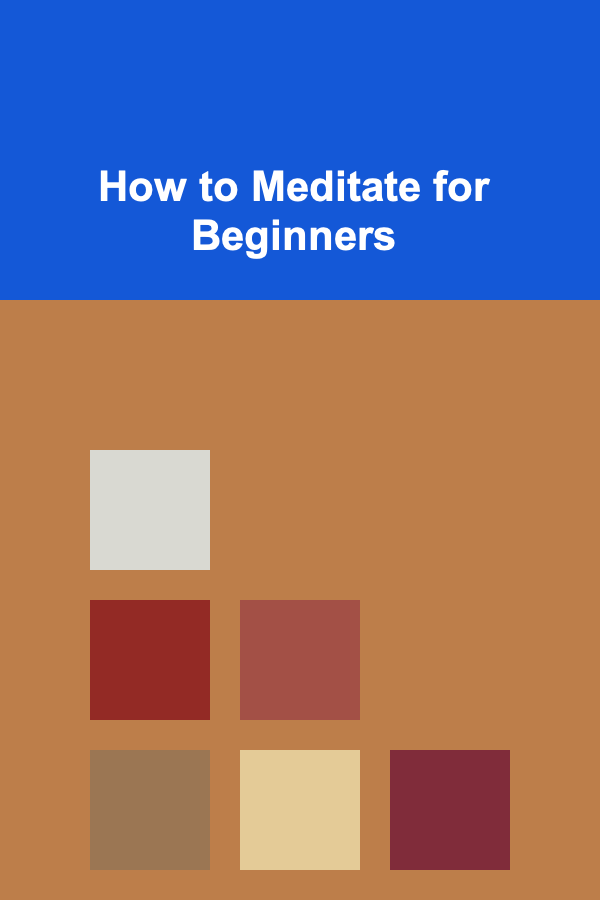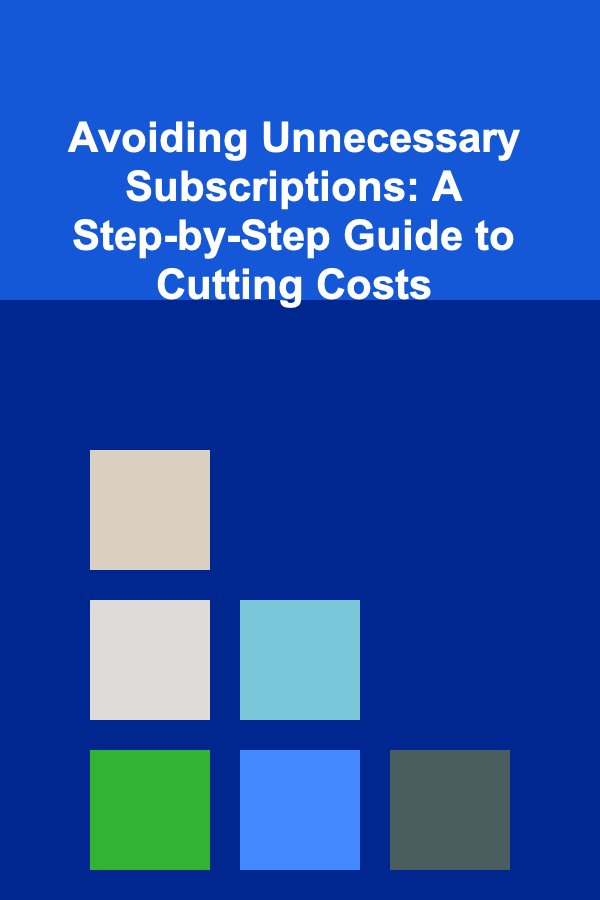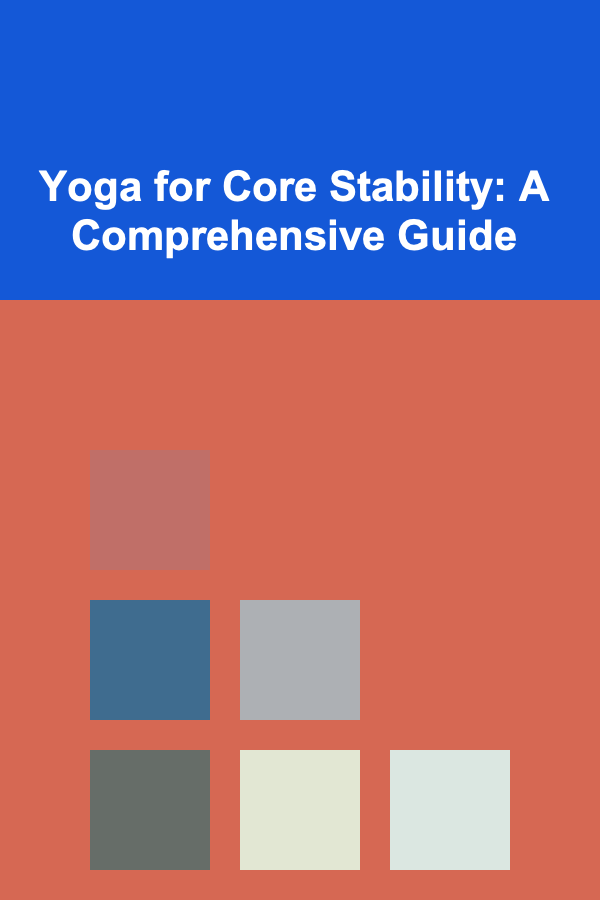
How to Meditate for Beginners
ebook include PDF & Audio bundle (Micro Guide)
$12.99$5.99
Limited Time Offer! Order within the next:

Meditation is a powerful tool for improving mental health, enhancing self-awareness, and promoting a sense of peace and relaxation. It's a practice that has been used for thousands of years in different cultures and religious traditions, from Buddhism and Hinduism to modern-day mindfulness practices. Despite its ancient origins, meditation is increasingly popular in today's fast-paced world as people search for ways to cope with stress, anxiety, and the demands of modern life.
For beginners, meditation can feel like a daunting or complex practice, but the truth is, it doesn't need to be. Whether you want to reduce stress, improve your focus, or simply find some peace in your busy day, meditation can be a simple yet profound way to achieve all of that. This guide will explore how to meditate for beginners, providing step-by-step instructions, tips for success, and different techniques to try.
What is Meditation?
Meditation is the practice of focusing the mind to achieve a mentally clear and emotionally calm and stable state. It often involves sitting in a quiet space, closing your eyes, and turning your attention inward. The practice has been shown to help reduce stress, improve concentration, enhance emotional health, and promote relaxation.
Meditation is not about clearing your mind entirely or trying to stop thinking; it's about noticing and acknowledging your thoughts without getting attached to them. The goal is to become more aware of your thoughts, feelings, and body sensations, allowing you to create a sense of inner peace and control.
The Benefits of Meditation
Before diving into how to meditate, it's important to understand why people meditate in the first place. Here are some key benefits of meditation:
- Stress Reduction: Meditation helps activate the parasympathetic nervous system, which calms the body and reduces the production of stress hormones like cortisol.
- Improved Focus and Concentration: Regular meditation strengthens the brain's ability to focus, which can lead to better attention and performance in daily tasks.
- Emotional Health: Meditation can help regulate emotions by encouraging a non-judgmental awareness of thoughts and feelings, which can help reduce anxiety and depression.
- Better Sleep: Meditating before bedtime can help calm your mind and prepare your body for rest, improving the quality of your sleep.
- Increased Self-Awareness: Meditation encourages you to turn inward and reflect on your thoughts, feelings, and behavior, leading to greater self-awareness and personal growth.
- Enhanced Mindfulness: Through meditation, you can cultivate mindfulness, the ability to stay present and engaged in the moment, which can improve your overall quality of life.
- Physical Health Benefits: Studies have shown that meditation can lower blood pressure, reduce inflammation, and even boost immune function.
Getting Started with Meditation: A Step-by-Step Guide
Meditation might seem intimidating at first, especially if you've never tried it before. But once you understand the basic principles and techniques, you'll realize that it's a simple, accessible practice. Follow these steps to start your meditation journey:
1. Find a Quiet, Comfortable Space
The first step in meditation is to find a quiet and comfortable space where you won't be disturbed. It doesn't need to be a perfectly silent room, but try to avoid places where you'll be interrupted or distracted by external noises. Your space can be indoors or outdoors, as long as it allows you to focus and relax.
2. Sit Comfortably
The next step is to find a comfortable sitting position. You don't need to sit in a traditional cross-legged position or on the floor if that's uncomfortable for you. Instead, sit in a chair or on a cushion with your back straight and your hands resting gently on your knees or in your lap.
- If sitting on the floor, you can sit cross-legged or in a kneeling position.
- You can also use a meditation cushion (zafu) or a chair with a firm backrest for added support.
- If sitting in a chair, keep your feet flat on the ground and your knees at a right angle.
3. Focus on Your Breath
Once you're comfortably seated, close your eyes or lower your gaze to minimize distractions. Begin to pay attention to your breath. Simply notice the sensation of the breath entering and leaving your body. You don't need to control your breath, just observe it as it naturally flows in and out.
- Inhale deeply through your nose, feeling your abdomen rise.
- Exhale slowly through your mouth, feeling your abdomen fall.
As you focus on your breath, you may notice your mind wandering. This is completely normal! When it happens, gently acknowledge the thought and then bring your attention back to your breath. The key is to keep returning your focus to the breath, each time with patience and without judgment.
4. Start with Short Sessions
For beginners, it's helpful to start with short meditation sessions and gradually increase the duration as you become more comfortable. Start with just 5 to 10 minutes of meditation each day, and then increase the time as you feel ready. It's better to meditate for a short time consistently than to force yourself to meditate for long periods and become frustrated.
5. Use a Guided Meditation (Optional)
If you're having trouble getting started, a guided meditation can be an excellent tool. Guided meditations are audio recordings or videos in which a teacher or guide leads you through the meditation process. This can be especially helpful for beginners, as it gives you structure and helps keep your mind focused.
There are many apps and websites offering free guided meditations, such as Headspace, Calm, or Insight Timer. These platforms offer a variety of meditation styles and durations to suit different needs.
6. Be Gentle with Yourself
It's important to remember that meditation is a practice, not a perfect state to achieve. Your mind will inevitably wander, and that's okay. The purpose of meditation is not to stop thinking but to create a space of awareness where you can observe your thoughts without getting caught up in them. Every time you bring your attention back to your breath, you are strengthening your mindfulness muscles.
If you feel restless or uncomfortable during meditation, simply acknowledge it without judgment. You can adjust your position or take a short break, and then return to your practice with a calm mind.
Different Types of Meditation
There are various types of meditation, each with its unique techniques and goals. As a beginner, you can experiment with different types to see which one resonates best with you.
1. Mindfulness Meditation
Mindfulness meditation is one of the most popular and accessible forms of meditation. It involves focusing on the present moment without judgment, observing your thoughts, feelings, and sensations as they arise. It can be practiced at any time and doesn't require any special setting or equipment.
- Focus: The present moment.
- Technique: Focus on the breath, bodily sensations, sounds, or thoughts. When distractions arise, simply return to your focus.
2. Loving-Kindness Meditation (Metta)
Loving-kindness meditation involves generating feelings of love and compassion for yourself and others. It's often used to cultivate empathy and emotional connection. During this practice, you silently repeat phrases like "May I be happy," "May I be healthy," and "May all beings be safe" to foster kindness and goodwill.
- Focus: Compassion and kindness.
- Technique: Repeat loving-kindness phrases toward yourself, loved ones, and even neutral or challenging people.
3. Guided Meditation
As mentioned earlier, guided meditation involves listening to a recorded meditation in which a teacher leads you through the process. It can include visualizations, affirmations, or relaxation techniques, and is great for beginners who may need structure.
- Focus: Varies depending on the guide.
- Technique: Follow the instructor's voice and instructions. You may be asked to focus on certain images or thoughts to evoke specific feelings.
4. Body Scan Meditation
In body scan meditation, you focus on different parts of your body, progressively relaxing each area. This technique helps increase awareness of bodily sensations and promotes deep relaxation. It's especially effective for reducing physical tension.
- Focus: Sensations in the body.
- Technique: Slowly move your attention from the top of your head to your toes, paying attention to each part of your body as you go.
5. Transcendental Meditation (TM)
Transcendental Meditation is a mantra-based meditation practice where you silently repeat a specific word or phrase (a mantra) to focus your mind and reach a deep state of relaxation. TM is often learned through a course or teacher, but it has gained popularity for its simplicity and effectiveness.
- Focus: Mantra repetition.
- Technique: Silently repeat a mantra in your mind for 15--20 minutes twice a day.
Tips for Successful Meditation Practice
While meditation is a personal journey, there are several tips that can help you get the most out of your practice:
- Be Consistent: Try to meditate daily, even if it's just for a few minutes. Consistency is key to building the habit and experiencing the benefits of meditation.
- Create a Routine: Set aside a specific time each day to meditate. Having a routine can help you stay committed and make meditation a regular part of your life.
- Be Patient: Meditation is a skill that takes time to develop. Don't expect immediate results or feel discouraged if you find it challenging at first. With practice, it will become easier.
- Use a Timer: Use a timer or an app to track the duration of your meditation session. This helps you focus on the practice without worrying about the time.
- Start with Short Sessions: If you're new to meditation, start with just 5 or 10 minutes, and gradually extend the time as you become more comfortable.
- Stay Open-Minded: Experiment with different meditation styles and techniques. The practice that works best for one person may not be the best for you, so don't hesitate to explore.
- Meditate with Others: If you feel comfortable, join a meditation group or attend a class. Meditating with others can provide support and motivation.
Conclusion
Meditation is a simple yet profound practice that can bring countless benefits to your mental, emotional, and physical well-being. As a beginner, the most important thing is to start where you are, with patience and consistency. There's no "perfect" way to meditate---what matters is your willingness to engage with the practice and make it a part of your life.
Whether you want to reduce stress, enhance your focus, or find inner peace, meditation offers a valuable tool to help you achieve those goals. With time and practice, meditation can become a transformative part of your daily routine, helping you create a more mindful and centered life.

Avoiding Unnecessary Subscriptions: A Step-by-Step Guide to Cutting Costs
Read More
How to Improve Your Public Speaking Skills with Regular Practice
Read More
How to Prepare for Dietary Restrictions in Your Menu
Read More
How to Create a Realistic Daily Schedule
Read More
Yoga for Core Stability: A Comprehensive Guide
Read More
The Five Elements of Feng Shui Explained: Wood, Fire, Earth, Metal, Water
Read MoreOther Products

Avoiding Unnecessary Subscriptions: A Step-by-Step Guide to Cutting Costs
Read More
How to Improve Your Public Speaking Skills with Regular Practice
Read More
How to Prepare for Dietary Restrictions in Your Menu
Read More
How to Create a Realistic Daily Schedule
Read More
Yoga for Core Stability: A Comprehensive Guide
Read More